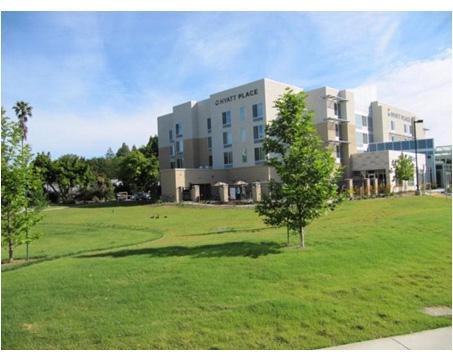'UC Verde' Buffalograss
Buchloe dactyloides, (boo-KLOH-ee dak-ty-LO-id-eez)
Buffalograss is one of the key species that was originally present in the prairies of the midwest. The variety UC Verde was developed for California conditions by UC researchers at Riverside and Davis. UC Verde is available through Florasource, Ltd.
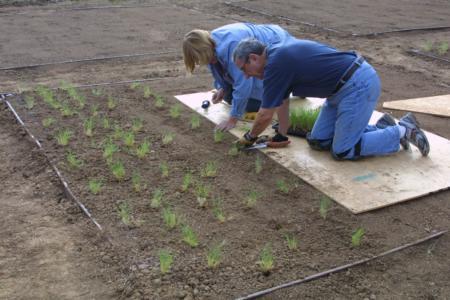
It is very competitive with weeds once established, and it requires mowing only every 2-3 weeks for a mowed lawn look, or as little as once a year for a more natural look.
An important feature is that it requires less water -- 50-75% less than tall fescue, and even much less than bermudagrass. It is also highly resistant to diseases and insect pests. Its main drawback is that, like bermudagrass, it goes fully dormant in the winter when hard frosts occur. People have used biodegradable green dye during the winter, which we plan to try.
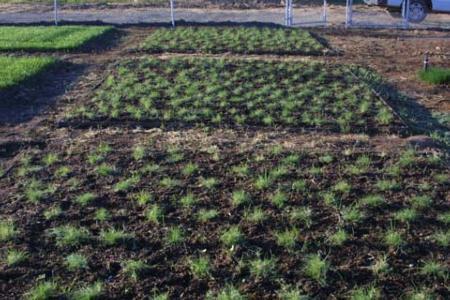
It can be planted in mid-summer also, but more careful attention to watering is required since the small plugs can dry out quickly.
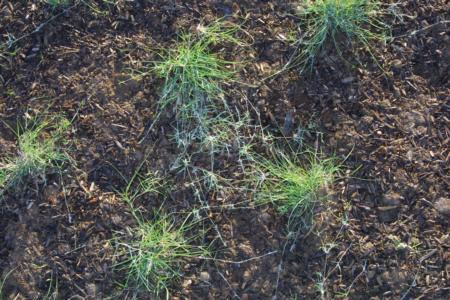
In our turf demonstration, we planted on Sept. 20, 2010. The plants began to grow, but then went dormant so the cool-season weeds had full reign.
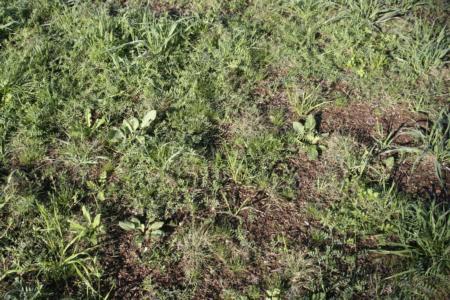
The site was previously a weedy field for many years. We didn't use pre-emergent herbicides and couldn't use post-emergents because a small amount of green tissue remained on the young plugs through the winter.
Also, we are using only organic methods on the plots.
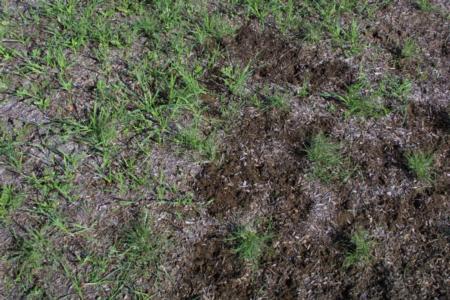
We thoroughly weeded each plot about 4 times. In retrospect, we should have planted in May and spent the winter rototilling or spraying herbicide to kill weeds. However, the weed seed bank became depleted, the grass filled in densely, and almost no weeds grew in summer 2011.
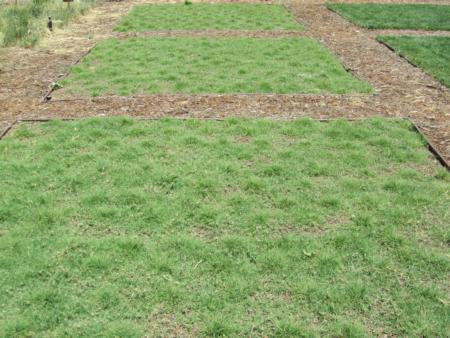
But in May the plots filled in (these aren't weeds), and UC Verde looks great. You can still see where the original plugs were.
Notice the lighter green color compared to the adjacent tall fescue (on right).
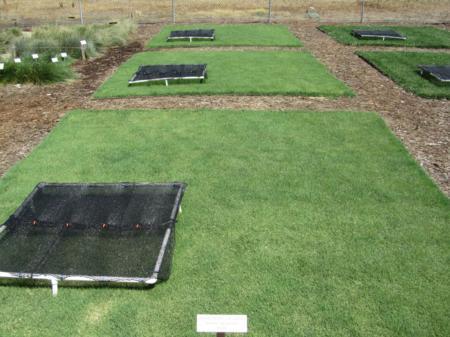
By mid-August, the UC Verde is completely filled in and the irrigation trial is underway.
The UC Verde was the only turf in the trial that didn't suffer from the 40% ETo watering.

To demonstrate how winter dormancy and browning can be overcome, we sprayed a 6' x 6' square in each of the three UC Verde plots with green turf colorant. Turf colorant is available at most irrigation/landscape supply stores. The product we used is Green Lawnger. Achieving uniform coverage required more spray volume than the label stated.
Turf colorant is not organic, but is harmless to turf and likely has little effect on the environment. A single application is supposed to last through the winter.
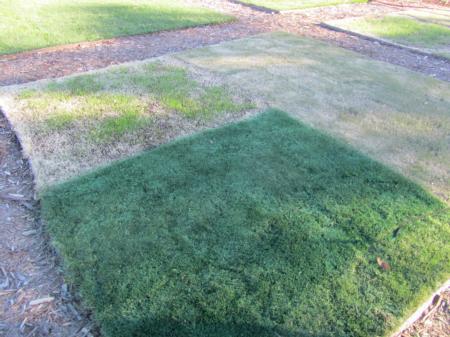
The colorant made the turf dark green and quite attractive.
In another square in each plot, in mid-November 2011 we cut the UC Verde to 3/4", planted annual ryegrass seed, and covered it with a thin layer of compost (adjacent to sprayed section). It will require mowing and fertilizing periodically in winter, somewhat reducing its value as an eco-friendly turf but being an organically acceptable method.
UC Verde was planted adjacent to the Graduate School of Management in Sept. 2009 (again, at the wrong time but it worked anyway). The following photos show its progress:

